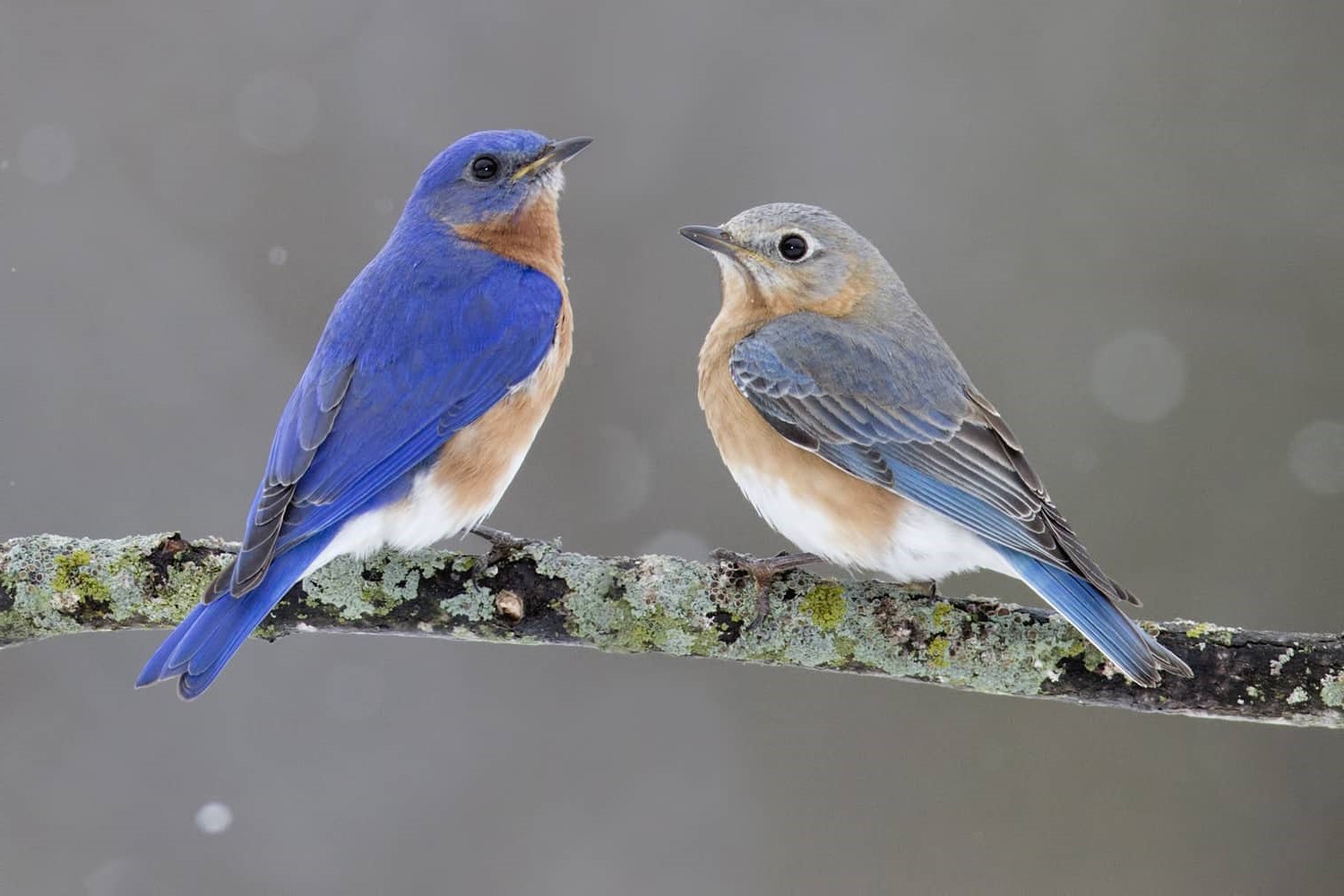
Ever wondered about the vibrant world of Eastern Bluebirds? These colorful creatures are more than just a pretty sight; they're fascinating subjects of nature's intricate design. Eastern Bluebirds are small, with dazzling blue feathers and a warm, rusty chest, making them a delightful sight in gardens and fields across the eastern parts of North America. But what makes these birds so special, and why should we care about them? From their unique nesting habits to their role in the ecosystem, there's a lot to learn about these feathered friends. Ready to dive into the world of Eastern Bluebirds and uncover some amazing facts? Let's flutter into their world and discover what makes these birds truly remarkable.
Key Takeaways:
- Eastern bluebirds are vibrant, melodious birds native to North America, known for their unique nesting habits and diet. Conservation efforts have helped their populations rebound, making them a symbol of happiness and good fortune.
- Attracting eastern bluebirds to your garden can be a rewarding endeavor, with nest boxes and a mealworm diet being effective methods. Their cultural significance as a symbol of happiness and renewal adds to their charm.
What Makes Eastern Bluebirds Unique?
Eastern bluebirds stand out for their vibrant colors and melodious songs. These small thrushes are a sight to behold with males showcasing bright blue backs and rusty throats, while females display a more subdued blue-gray coloration. Their presence is often associated with happiness and good fortune, making them beloved among birdwatchers and nature enthusiasts.
- Eastern bluebirds are native to North America, thriving in open woodlands, farmlands, and gardens.
- They have a distinctive song, described as a soft, melodious "chur-wi" or "truly" sound, which they use to communicate and attract mates.
Eastern Bluebird Habitat and Diet
Understanding the habitat and diet of these birds is crucial for their conservation. Eastern bluebirds prefer open areas with low grass and perches for hunting. They nest in cavities, often utilizing man-made nest boxes when natural options are scarce.
- Their diet primarily consists of insects during spring and summer, including caterpillars, beetles, and grasshoppers.
- In colder months, they switch to fruits and berries, helping them survive when insects are less abundant.
Reproduction and Lifespan of Eastern Bluebirds
Eastern bluebirds have fascinating reproductive behaviors, with a strong emphasis on family and community. They are monogamous during a breeding season but may choose different partners in subsequent seasons.
- Females lay between three to seven pale blue eggs per clutch, with two to three broods per year.
- The average lifespan of an eastern bluebird in the wild is 6 to 10 years, though many succumb to predators and environmental factors before reaching old age.
Conservation Status and Efforts
Despite facing challenges from habitat loss and competition for nesting sites, eastern bluebirds have benefitted from human intervention. Conservation efforts, particularly the establishment of bluebird trails and nest box programs, have helped their populations rebound.
- As of now, eastern bluebirds are not considered endangered, thanks to successful conservation programs.
- Community involvement in monitoring nest boxes has played a significant role in protecting these birds and ensuring their habitats are preserved.
Interesting Behaviors of Eastern Bluebirds
Eastern bluebirds exhibit a range of interesting behaviors that reflect their social and familial dynamics. From their feeding habits to their nesting practices, these birds have adapted well to their environments.
- They often hunt by perching on a high vantage point and swooping down to catch prey.
- During nesting season, males attract females by performing a fluttering display flight and bringing offerings of food.
The Role of Eastern Bluebirds in Ecosystems
Eastern bluebirds play a vital role in their ecosystems, acting as both predator and prey. Their diet helps control insect populations, while they themselves are a food source for larger predators.
- Their presence indicates a healthy, balanced ecosystem, where various species coexist and support each other.
- By dispersing seeds through their fruit-based diet, they contribute to the regeneration of plant life, further enriching their habitats.
How to Attract Eastern Bluebirds to Your Garden
For those interested in observing these beautiful birds up close, attracting them to your garden can be a rewarding endeavor. Providing the right conditions can turn your backyard into a haven for eastern bluebirds.
- Installing nest boxes is an effective way to attract breeding pairs, especially if placed in open areas with nearby perches.
- Offering a diet of mealworms and maintaining a birdbath can also encourage visits from these birds.
The Cultural Significance of Eastern Bluebirds
Eastern bluebirds hold a special place in folklore and culture, symbolizing happiness, renewal, and the arrival of spring. Their cheerful appearance and songs have made them a favorite subject in art and literature.
- In many cultures, spotting an eastern bluebird is considered a sign of good luck or a positive omen.
- Their depiction in Native American mythology often involves themes of transformation and joy.
Challenges Facing Eastern Bluebirds Today
Despite their resilience, eastern bluebirds face ongoing threats that require continued conservation efforts. Habitat destruction, climate change, and competition for nesting sites are just a few of the challenges these birds encounter.
- Pesticide use can reduce their food supply by killing off insects, making it harder for them to feed their young.
- Climate change affects their migration patterns and breeding seasons, potentially disrupting their life cycle.
The Future of Eastern Bluebirds
Looking ahead, the future of eastern bluebirds depends largely on our actions and commitment to preserving their habitats. Continued support for conservation programs and responsible environmental practices will be key to their survival.
- Engaging in citizen science projects can help track their populations and contribute to their conservation.
- Educating others about the importance of these birds and how to protect them ensures that future generations can also enjoy the beauty and songs of eastern bluebirds.
A Final Glimpse at the Eastern Bluebird
Eastern bluebirds, with their vibrant plumage and melodious songs, add a splash of color and harmony to our surroundings. These feathered friends play a crucial role in ecosystems, controlling insect populations and bringing joy to birdwatchers. Their nesting habits, from selecting cozy cavities to fiercely protecting their young, showcase nature's intricacies. Despite facing challenges like habitat loss and competition for nesting sites, conservation efforts have helped their numbers rebound, highlighting the impact of collective human action in preserving wildlife. As we continue to share our spaces with these beautiful creatures, understanding and respecting their needs is key to ensuring they flourish. Let's cherish every glimpse we get of the eastern bluebird, a symbol of resilience and beauty in our natural world.
Frequently Asked Questions
Was this page helpful?
Our commitment to delivering trustworthy and engaging content is at the heart of what we do. Each fact on our site is contributed by real users like you, bringing a wealth of diverse insights and information. To ensure the highest standards of accuracy and reliability, our dedicated editors meticulously review each submission. This process guarantees that the facts we share are not only fascinating but also credible. Trust in our commitment to quality and authenticity as you explore and learn with us.


